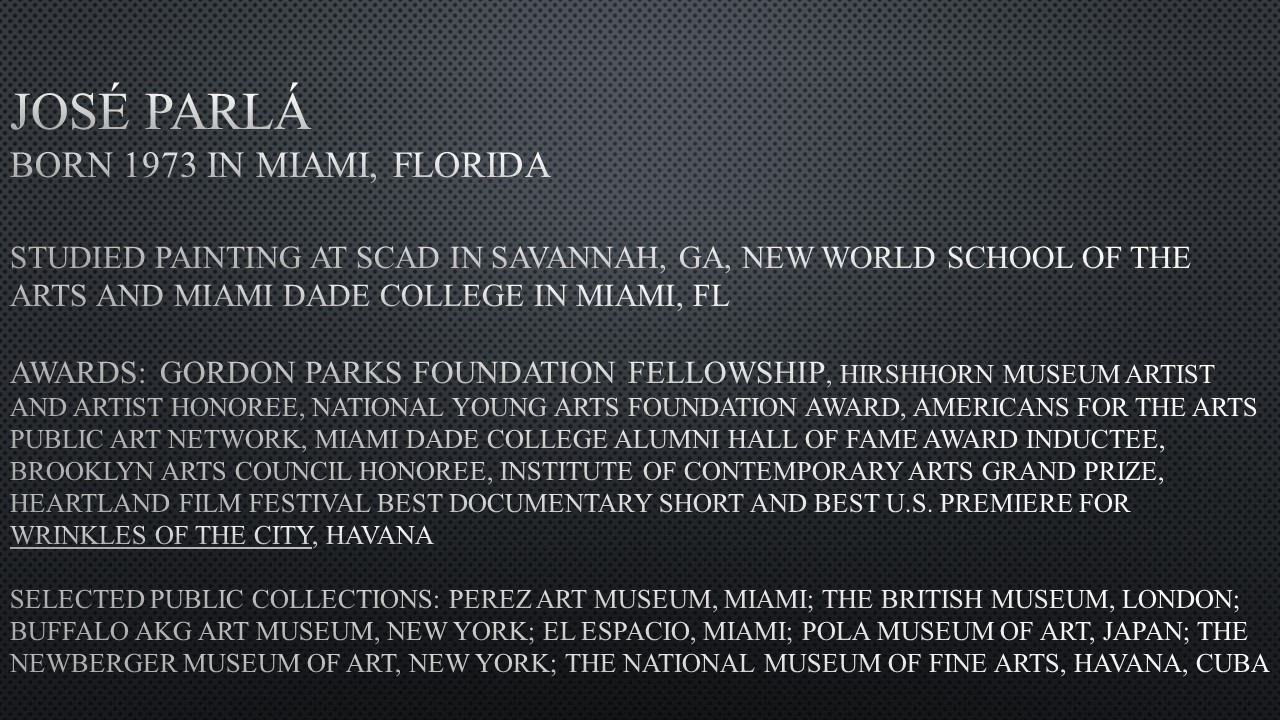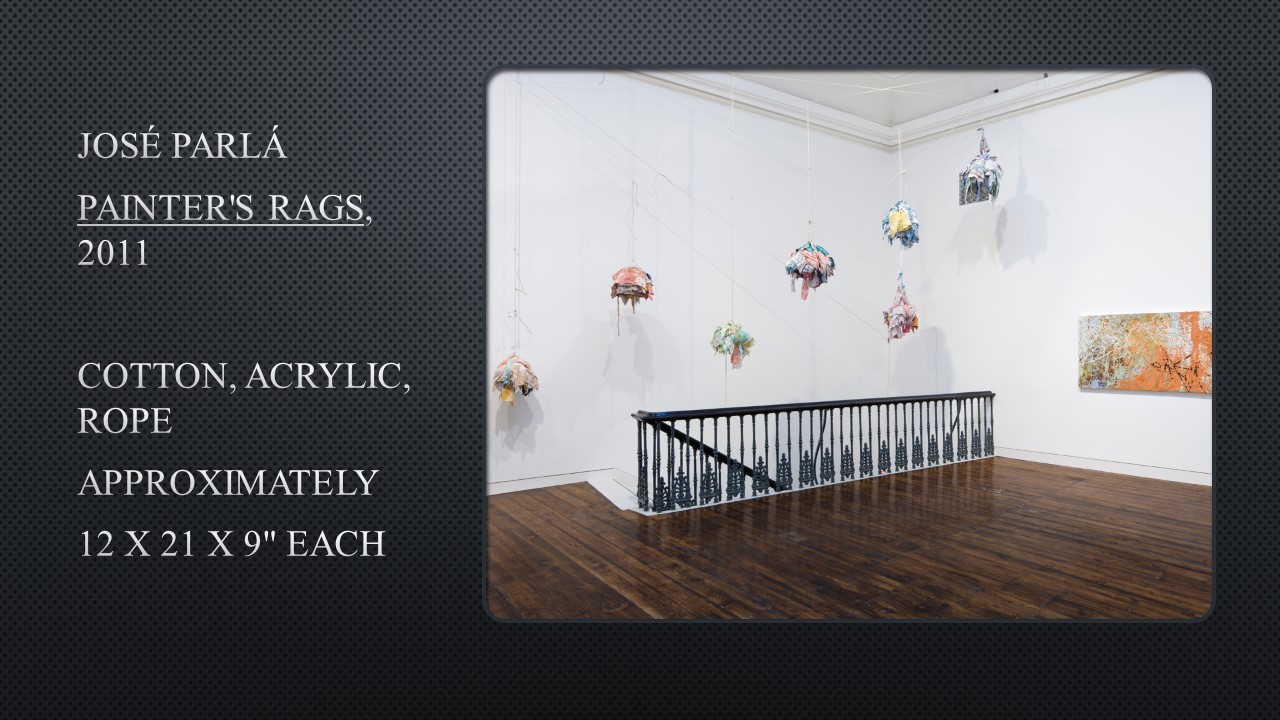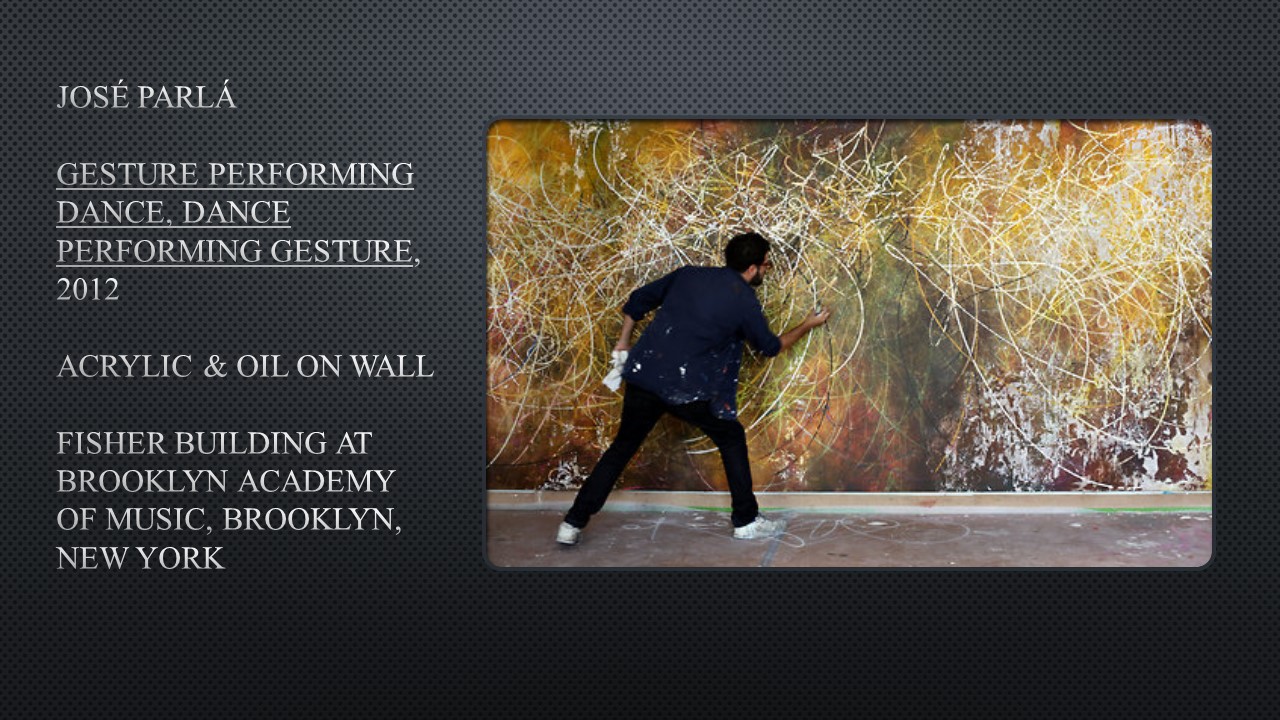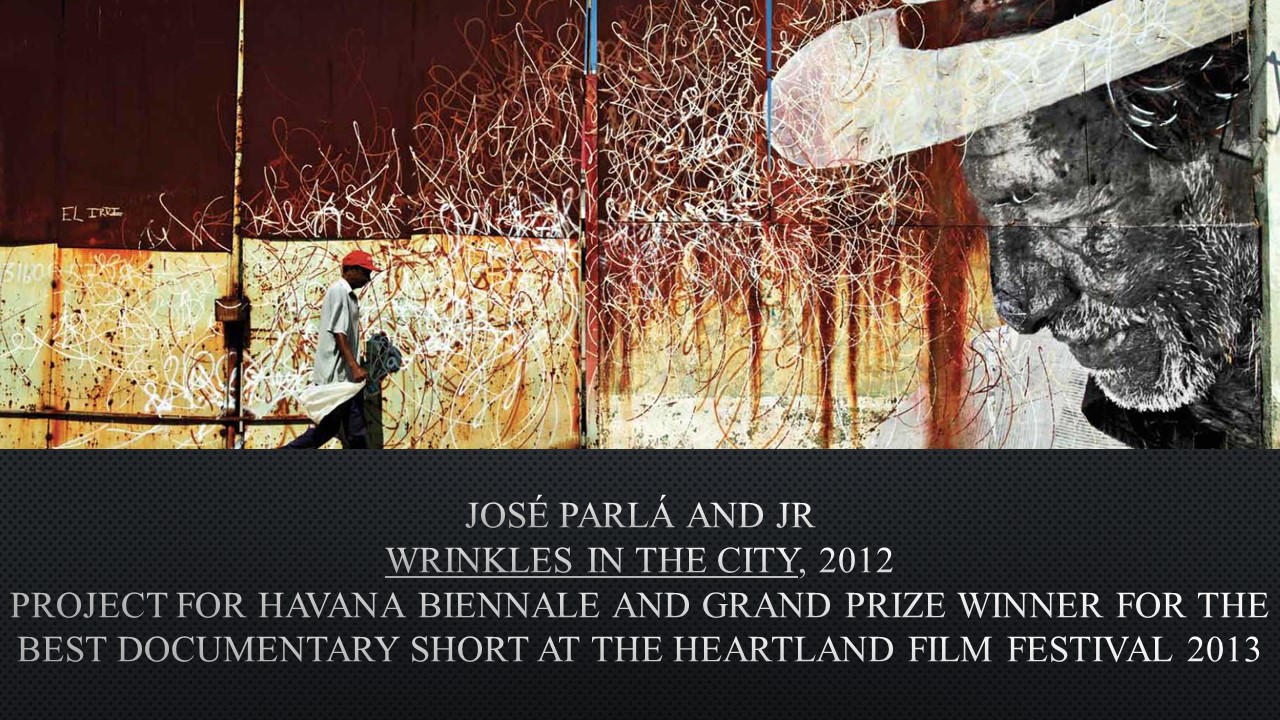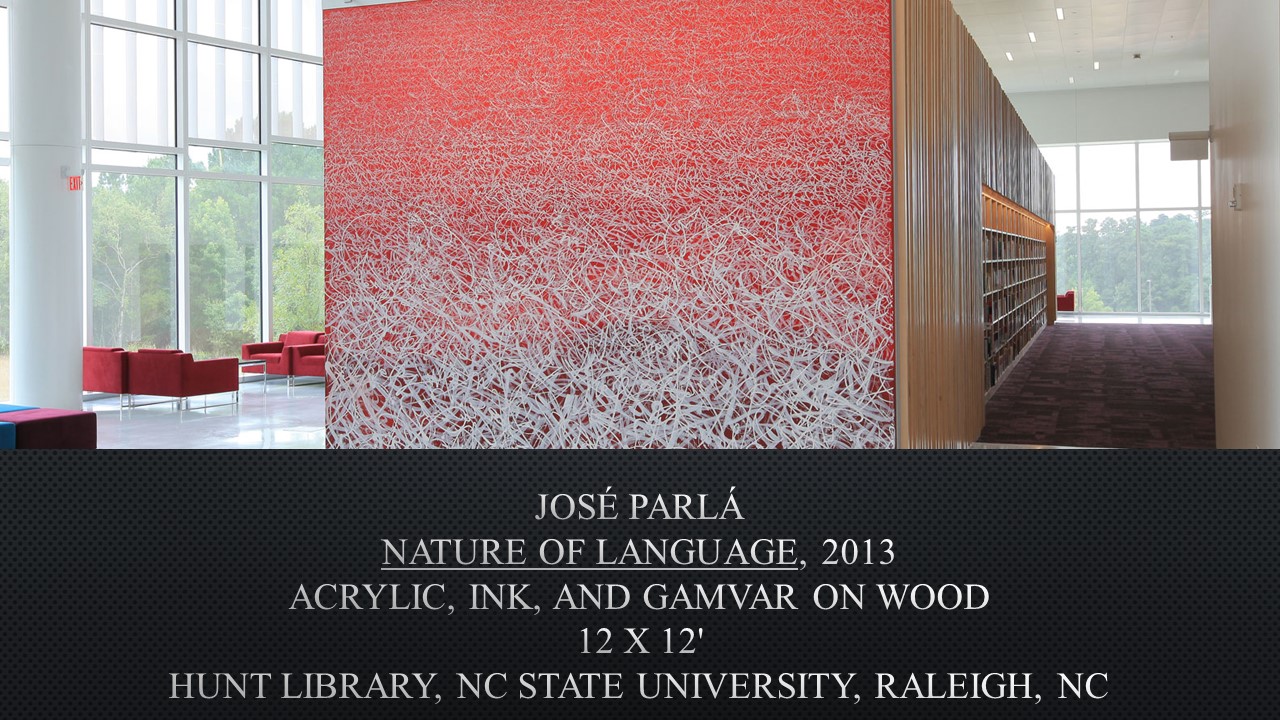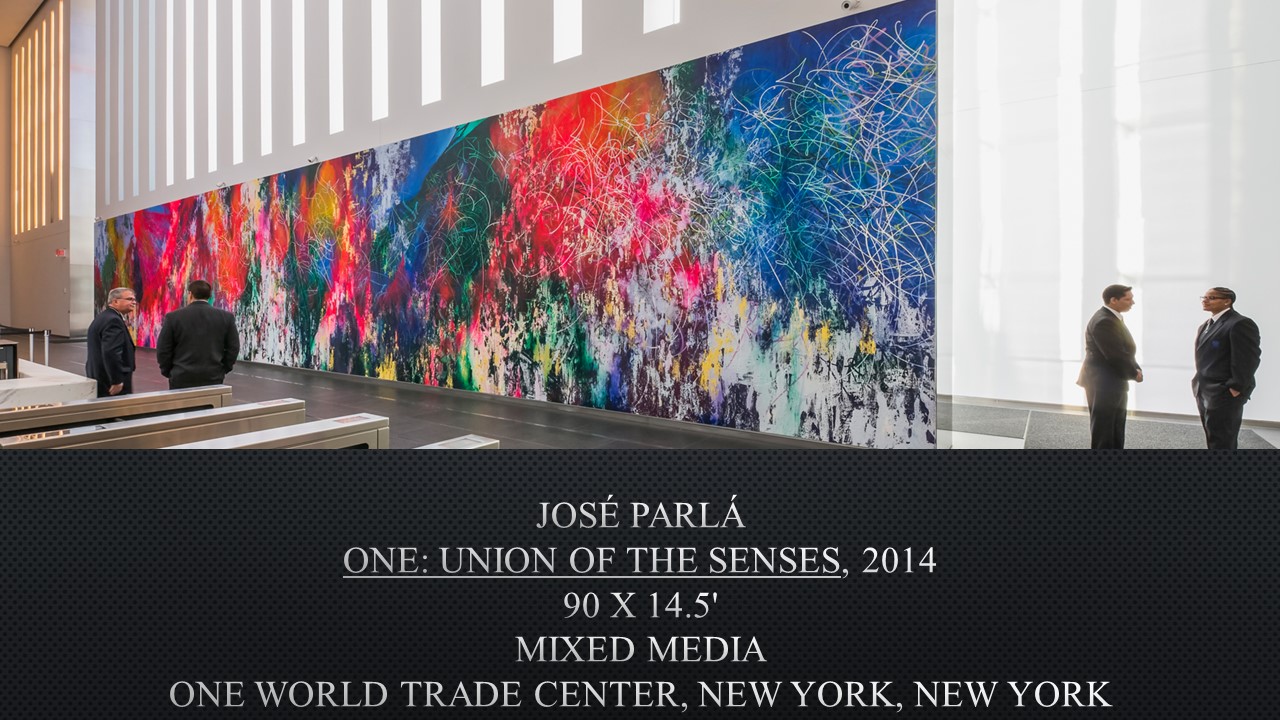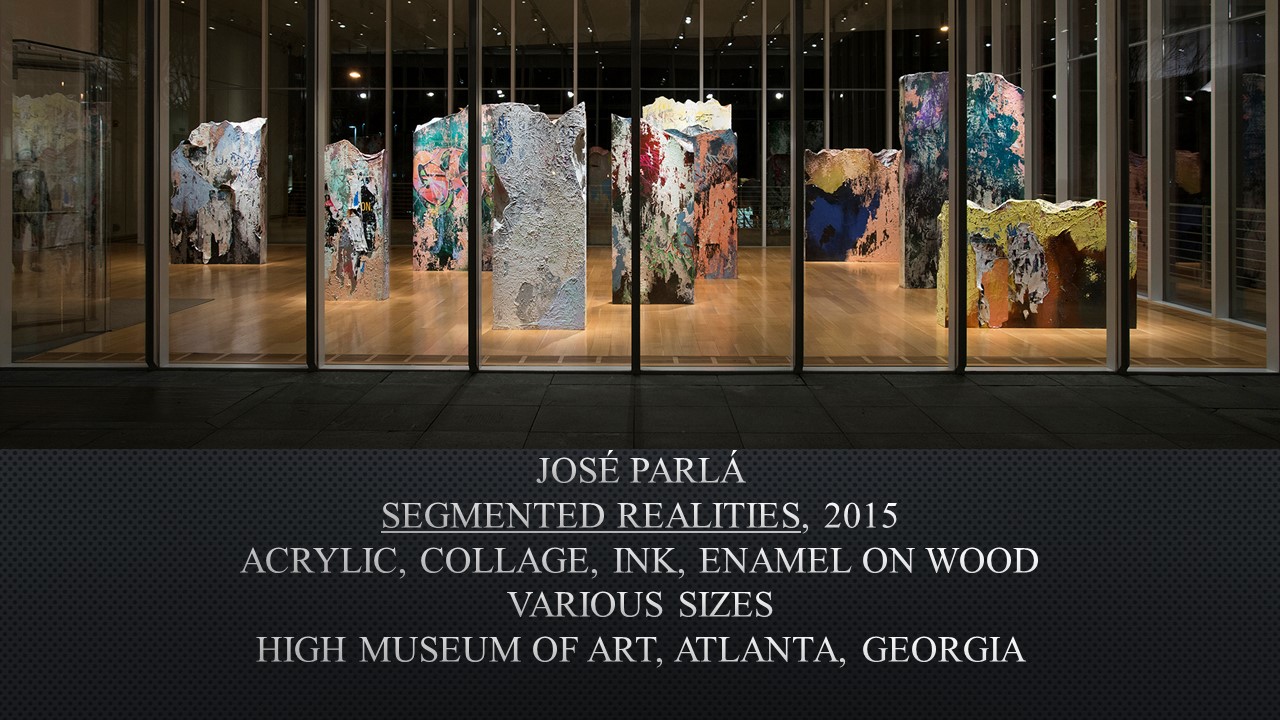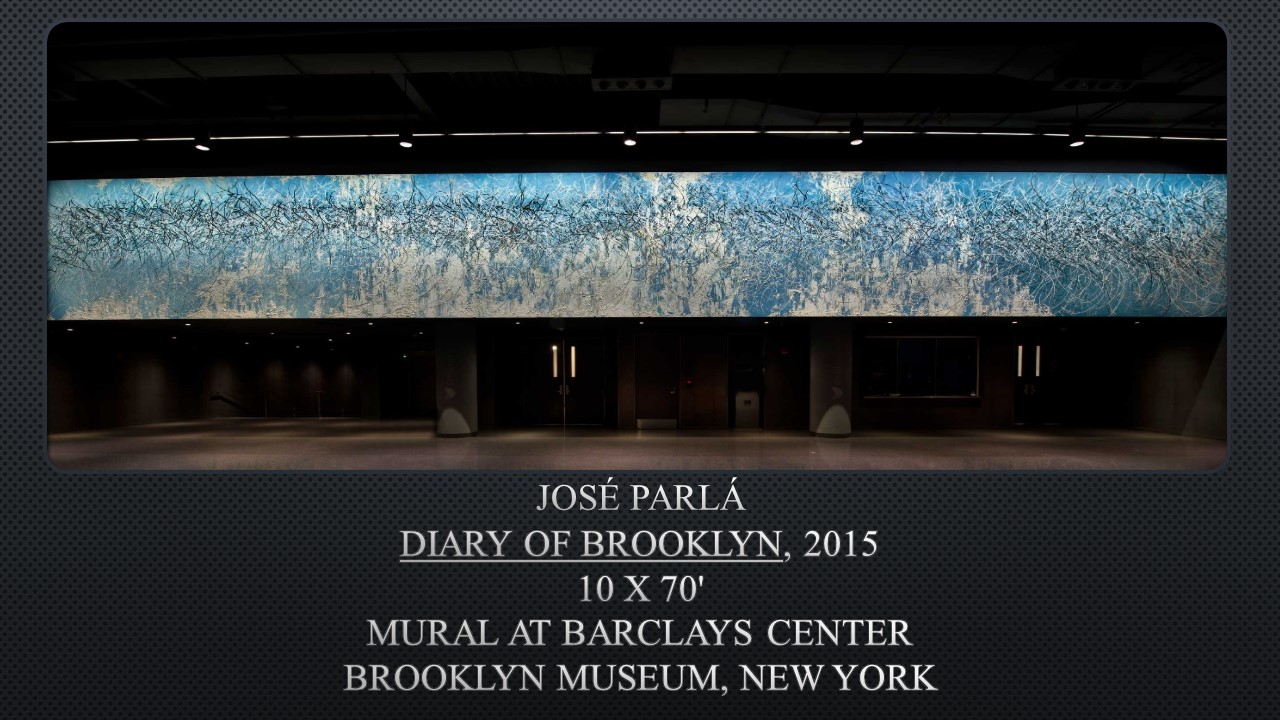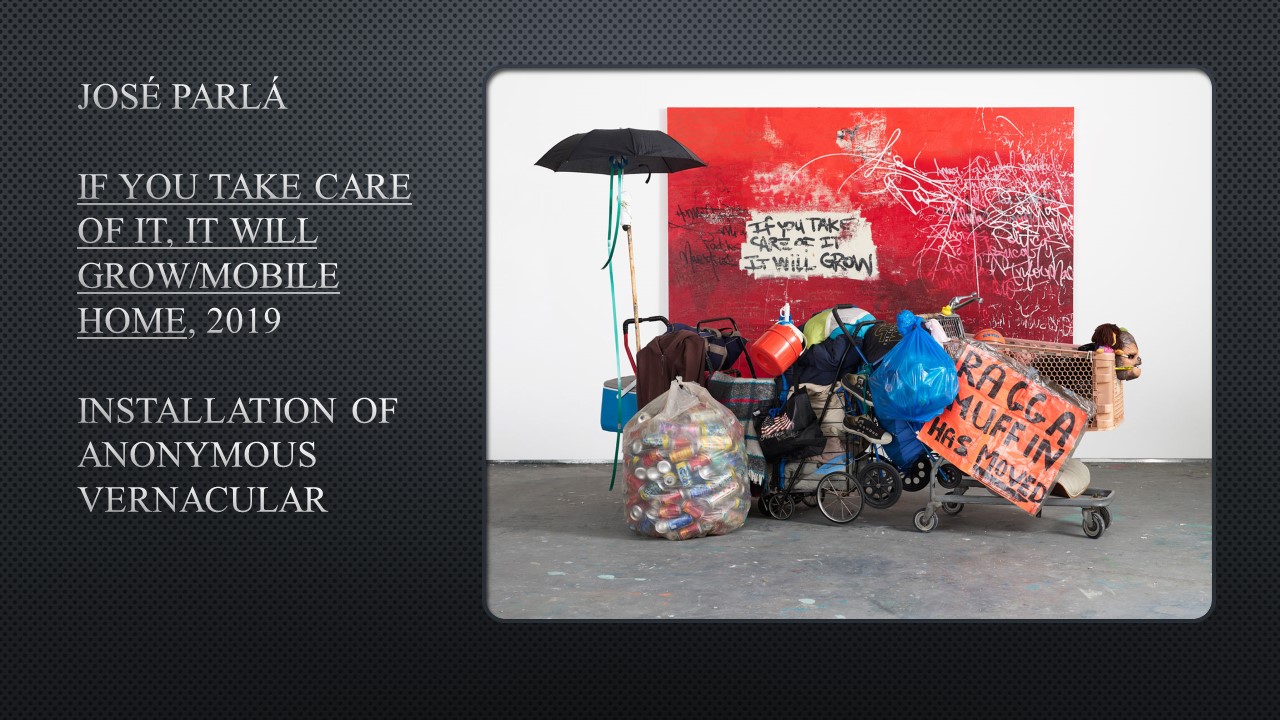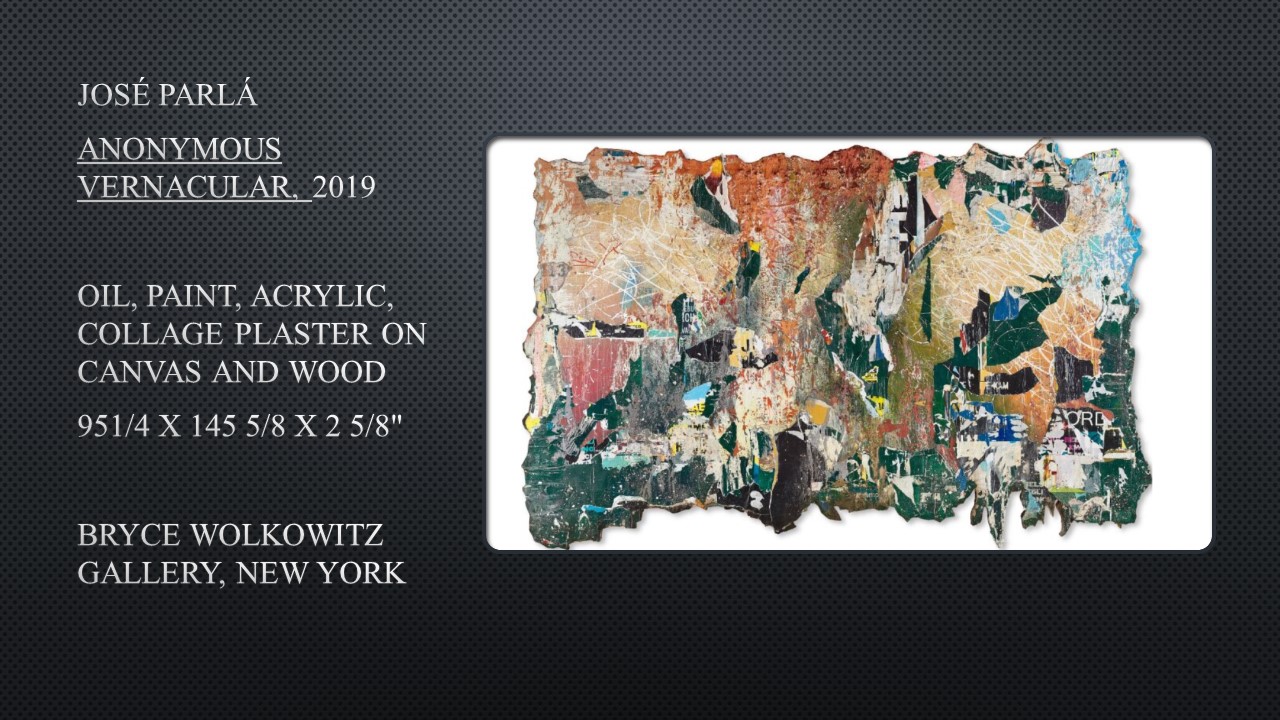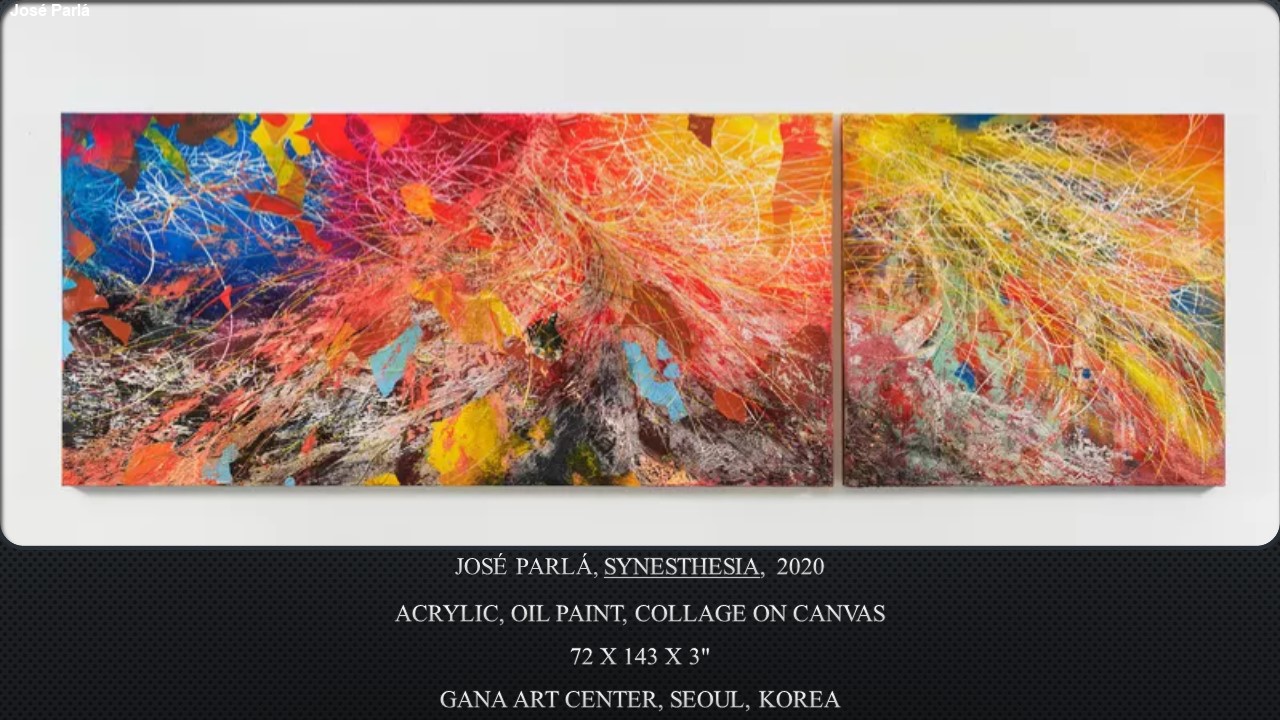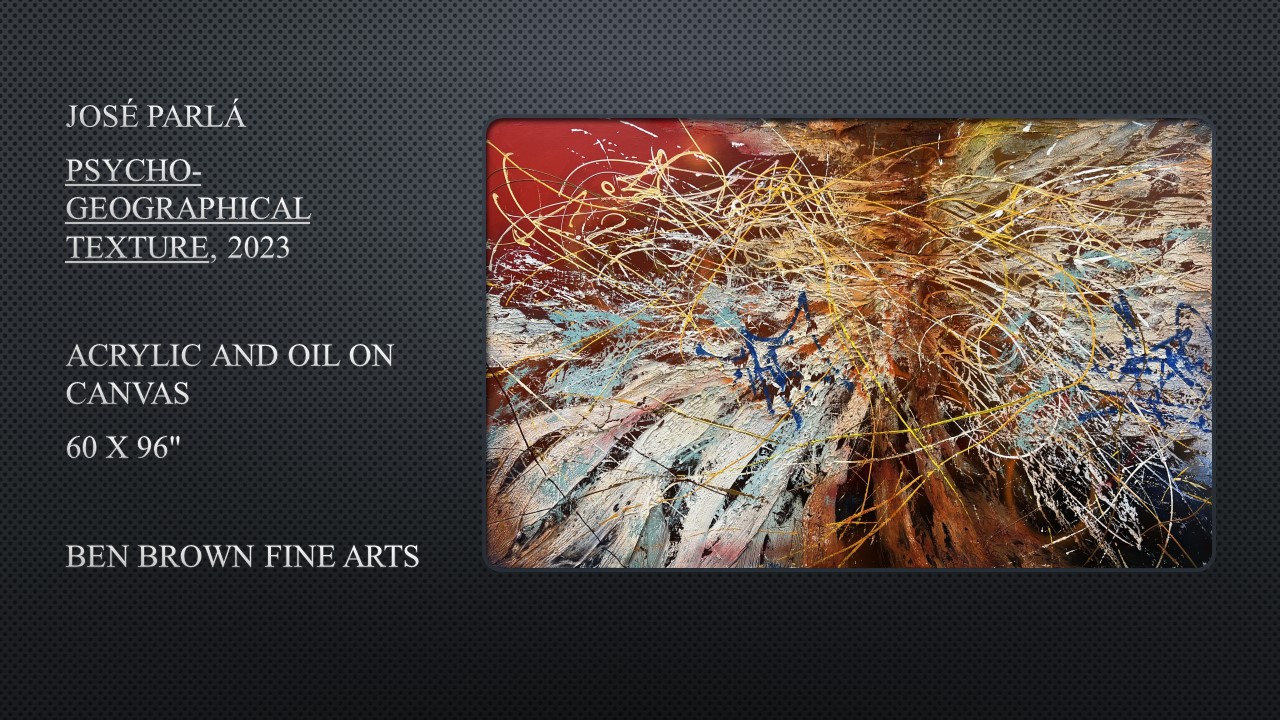José Parlá
José Parlá is a multidisciplinary artist working in painting, sculpture, installations, calligraphy, collage, printmaking, photography, video, film, and dance performing gestures. I first saw his work at an exhibition in the SCAD Art Museum. His work has its lineage in street art. His work is proof that places have history, and Parlá has made the walls talk. Through his work, West Liberty and Whitaker Street Savannah, GA 1991, he confronts us with a type of polymorphic memory—proof that neighborhoods have not only their century’s old histories but have just as much importance in the here and now. This sculpture stands in such a way that it looks like he pulled the wall from its building and plopped it down in the museum.
In 2012, Parlá and French artist JR collaborated on a project for the Havana Biennale. They photographed and painted the walls with twenty-five senior citizens who had lived through the Cuban Revolution. Lorenze y Obdulia Manzano is one example of the work they did. As they worked, they filmed the people’s reactions and captured it all in a film entitled Wrinkles of the City, which won the grand prize for the best documentary short and best US premiere at the Heartland Film Festival in 2013. Film can be seen here.
In 2014, Parlá completed his most massive mural at One World Trade Center, One: Union of the Senses, where 20,000 people a day will see it. The painting is a high-spirited explosion of colors celebrating people’s diversity and the call to unite as one.
In 2015, I saw Parlá’s work at the High Museum in Atlanta. The exhibit, Imagining New Worlds—Wilfredo Lam, José Parlá, and Fahamu Pecou, was an interesting comparison of the three artists in a three-part exhibition. In the first room, Lam’s genius as a hybrid surrealist came through with its Afro-Caribbean roots and his use of stylistic and theoretical aspects of French Surrealism. This polymorphism leads to Parlá and Pecou’s use of the same in their work. The response led to a street dance of sorts with a dramatic look at the historical line between 20th and 21st-century urban art.
In 2019, he created Anonymous Vernacular. Parlá described it as “The anonymity of actions and marks made in a city can amount to an ever-evolving contemporary vernacular—the city as text. A name or message on a wall, homeless people pushing their makeshift homes in a cart, layers of ripped posters, or an old tarp covering a hole, broken subway tiles, erosion on a steel panel in an alleyway filled with trash, all part of our humanity’s anonymous vernacular.” As his first large-scale mural, Parlá produced Gesture Performing Dance, Dance Performing Gesture by dancing with paint in hand making rhythmic gestures. Parlá calls it a “reminder that we are not passive by-standers in a world that our senses produce for us from moment to moment. Parlá poetically challenges ideas about language, politics, and identity. He incorporates the body’s gesture into a painterly stream of consciousness that challenges the status quo.
We can learn more about Parlá and his work. See Yuka Tsuruno in Tokyo, Ben Brown Fine Arts in London, and Gana Art in Seoul.
PLEASE SEE PORTFOLIO BELOW




